THORGEON Trace heating cables and electric surface heating
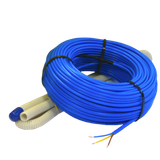

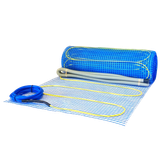

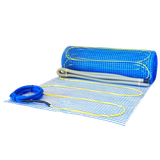
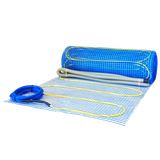







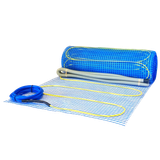

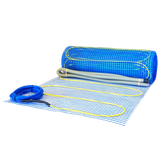

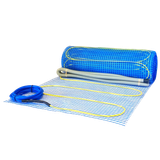


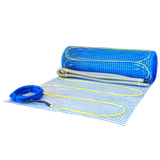


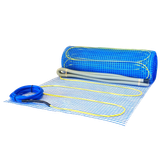
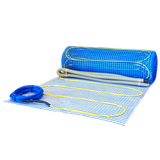
thorgeon trace heating cables overview and use cases
Thorgeon focuses on predictable heat output, clean EMC, and repeatable installation practice across plant rooms and exposed runs. Typical outputs for thorgeon trace heating cables sit at 10–30 W/m for frost protection and 25–60 W/m where temperature maintenance is needed on process lines or long domestic services. Crews get pre-terminated cold leads, braid screens for PE continuity, and gland kits that fit standard M20 knockouts. In practice, we see maintain temps of 5…65 °C on water lines and 40…80 °C on light process services, with start-up sizing checked against ambient minima.
thorgeon electric surface heating range and formats
The portfolio for thorgeon electric surface heating covers roof/gutter tapes, valve/actuator jackets, and slab meshes for loading bays. Self-regulating tapes ride changing ambient without overshoot, while constant-watt mats give tight W/m² density for uniform floor or ramp thaw. Expect 230 V AC supply as standard; IP67 splice kits keep moisture out in gutters and washdown zones. For long ladders, spec junction boxes with 360° shield clamps so noise stays out of nearby VFD control.
thorgeon heating cables technical specifications
Cable cores use tinned copper with fluoropolymer or XLPE insulation; screens are tinned-copper braid plus Al-foil where higher EMC immunity is required. Reference documents include IEC 60800 for underfloor/comfort heating, IEC/EN 62395-1 for industrial heating on pipes and vessels, and EN 50575 (CPR) for reaction-to-fire classes on indoor runs. Typical limits: max exposure 85…105 °C (de-energized), minimum bend radius 6–8 × OD, and UV-stable jackets for external routing. Leakage-protection is RCD ≤ 30 mA. We recommend type C breakers to handle inrush on self-regulating starts. A dedicated paragraph in datasheets covers inrush, so panel builders can coordinate MCB curves with upstream protection when deploying thorgeon heating cables on shared feeders.
thorgeon frost protection cables applications and compatibility
Loading docks, sprinkler mains, process condensate lines, and long potable services benefit from thorgeon frost protection cables sized to ambient −20…−30 °C with wind factor where outdoors. Pair with NTC or PT100/1000 sensors and thermostats featuring pipe-surface and ambient probes; BACnet/Modbus gateways feed BMS trend logs for compliance records. Where pipes are plastic, add aluminum heat spreaders under the tape and verify insulation thickness so W/m actually reaches the medium. Check valve handles and flanges—short “detail” loops prevent cold spots and nuisance freeze alarms.
thorgeon self-regulating heating systems integration and control
Closed-loop control uses local stats with 0–10 V bias from BMS or simple on/off with adjustable differential. thorgeon self-regulating heating systems cut output as pipe warms, limiting hot-spot risk and reducing breaker trip events. For large manifolds, group circuits by similar exposure to keep cycling coherent; label sets by circuit ID, breaker, and sensor location. Where drives and radios share cabinets, keep SELV and mains segregated, clamp shields 360° at gland plates, and maintain 7.5–10 mm breathing around warm controllers.
thorgeon underfloor heating cables selection for B2B projects
Comfort meshes for offices and apartments run at 100–160 W/m² depending on floor buildup. When selecting thorgeon underfloor heating cables, confirm substrate (concrete, anhydrite, tile backer), insulation depth, and allowable surface temperature (usually ≤ 29 °C in occupied zones). Foil-backed mats speed coverage under floating floors; twin-conductor cold tails simplify layout and reduce loop returns. Use floor probes in conduit for serviceability; thermostats with energy logs help facility teams match setback schedules to occupancy.
thorgeon industrial heating solutions procurement with Bankoflamps
Process skids, CIP lines, chemical totes, and tank nozzles often need higher W/m and tighter control. thorgeon industrial heating solutions include series-resistance circuits with fixed wattage, junction boxes in stainless or GRP, and AT-friendly accessories where specified by the project. Bankoflamps aligns procurement to commissioning windows: project-specific pricing, near-hour quote turnaround by EAN/MPN, and live EU stock before crews mobilize. Your portal view shows lead times, shipment tracking, and downloadable price lists with validity periods you can plan around. Trusted customers can use post-payment up to 30 days. We consolidate partials so cables, stats, sensors, junction kits, and labels arrive room-bundled, and your account manager cross-checks kW/m, breaker curves, IP/IK, shield termination notes, and strip lengths against your drawings—keeping deliveries site-ready across France, the Baltics, Germany, Spain, Italy, Belgium, and the Netherlands.
Product range and series overview
Self-regulating tapes: 10, 15, 25, 33, and 40 W/m at 10 °C, cut-to-length with parallel bus-wires; best for variable ambient and mixed valves/fittings.
Constant-watt mats: fixed W/m² for floors, stairs, and ramps; twin-core, low EMF layout, rapid warm-up under tile or screed.
Series-resistance cables: long-run industrial lines where voltage drop and precise outputs are engineered by length; used with dedicated limiters.
Controls and sensors: pipe, ambient, and floor probes; 2-stage stats (maintain/boost); gateways for BMS points; alarm relays for frost or break detection.
Applications and compatibility
Roofs and gutters: route along the low edge and inside downpipes; IP67 terminations and drip-loop discipline prevent water ingress.
Pipes and vessels: verify insulation thickness, jacket type, and maximum exposure; add glass-cloth tape under clamps.
Floors and ramps: check expansion joints; place protective conduits for probes; set RCD per zone to local code.
Panels: segregate SELV from mains, bond braids, and note inrush on schedules so panel builders coordinate protection with other VFD-rich loads.
Integration with other Thorgeon products
Panels, installation boxes, and luminaires share gland thread sizes and marker schemes, which keeps site labeling consistent. Thermostats expose BACnet/Modbus points for setpoint, demand, and alarm status, tying neatly into Thorgeon plant-room coordination where fans, pumps, and smoke control already sit on the same backbone. Publish EMC practice and shield strategy once, then repeat it riser by riser.
Selection criteria for B2B clients
Define the duty: frost protection vs temperature maintenance. Choose self-reg vs constant watt by variability of ambient and detail density. Confirm supply (230 V), breaker/RCBO curves, RCD type, and inrush. Check environment: IP rating for junctions, UV exposure, chemicals. Document insulation thickness, pipe size, and sensor type. For floors, validate buildup and W/m². Room-bundle cabinets and field kits by riser so spares and drawings stay aligned from submittal to handover.